Bust of a man wearing a cuirass
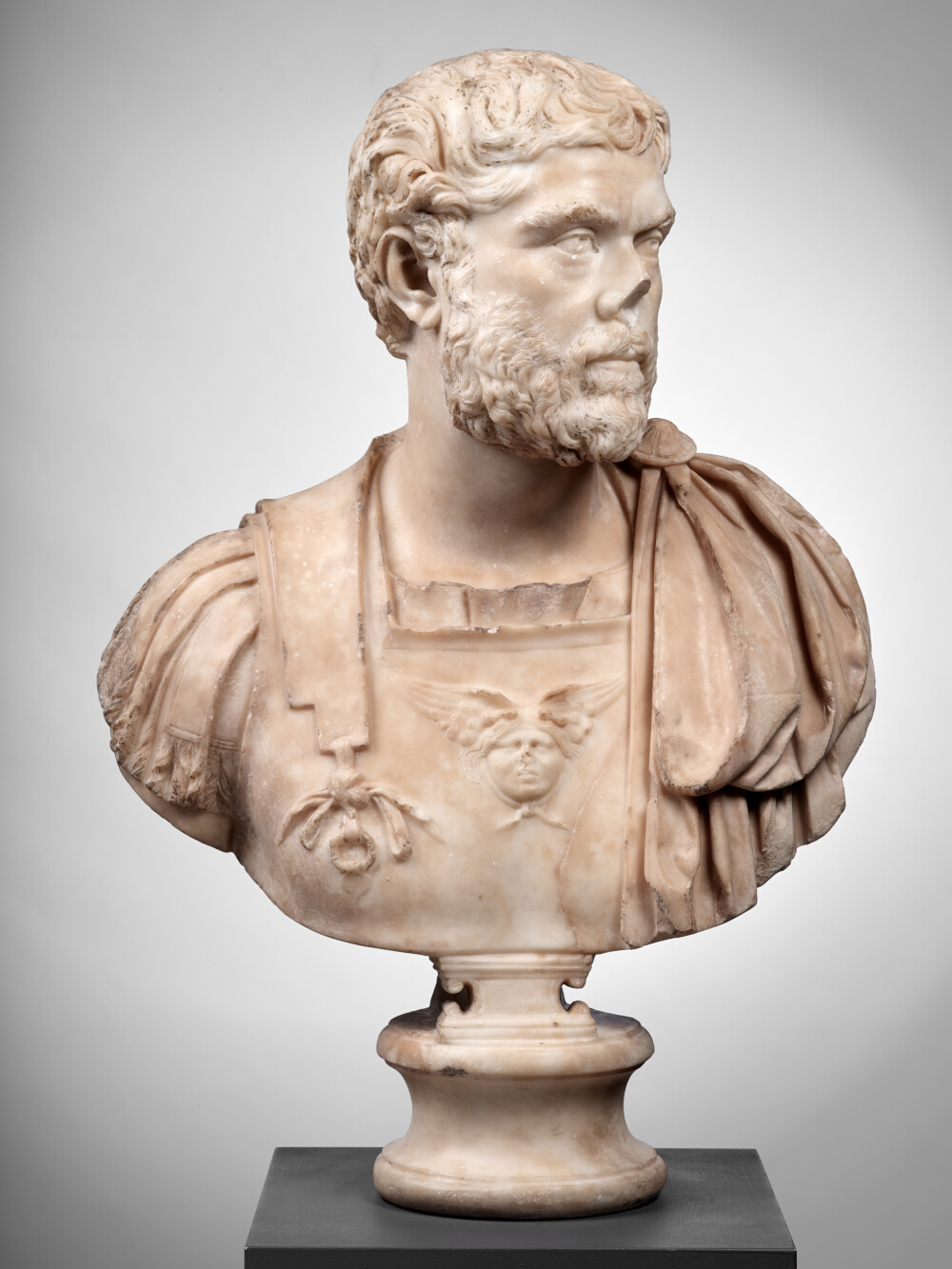
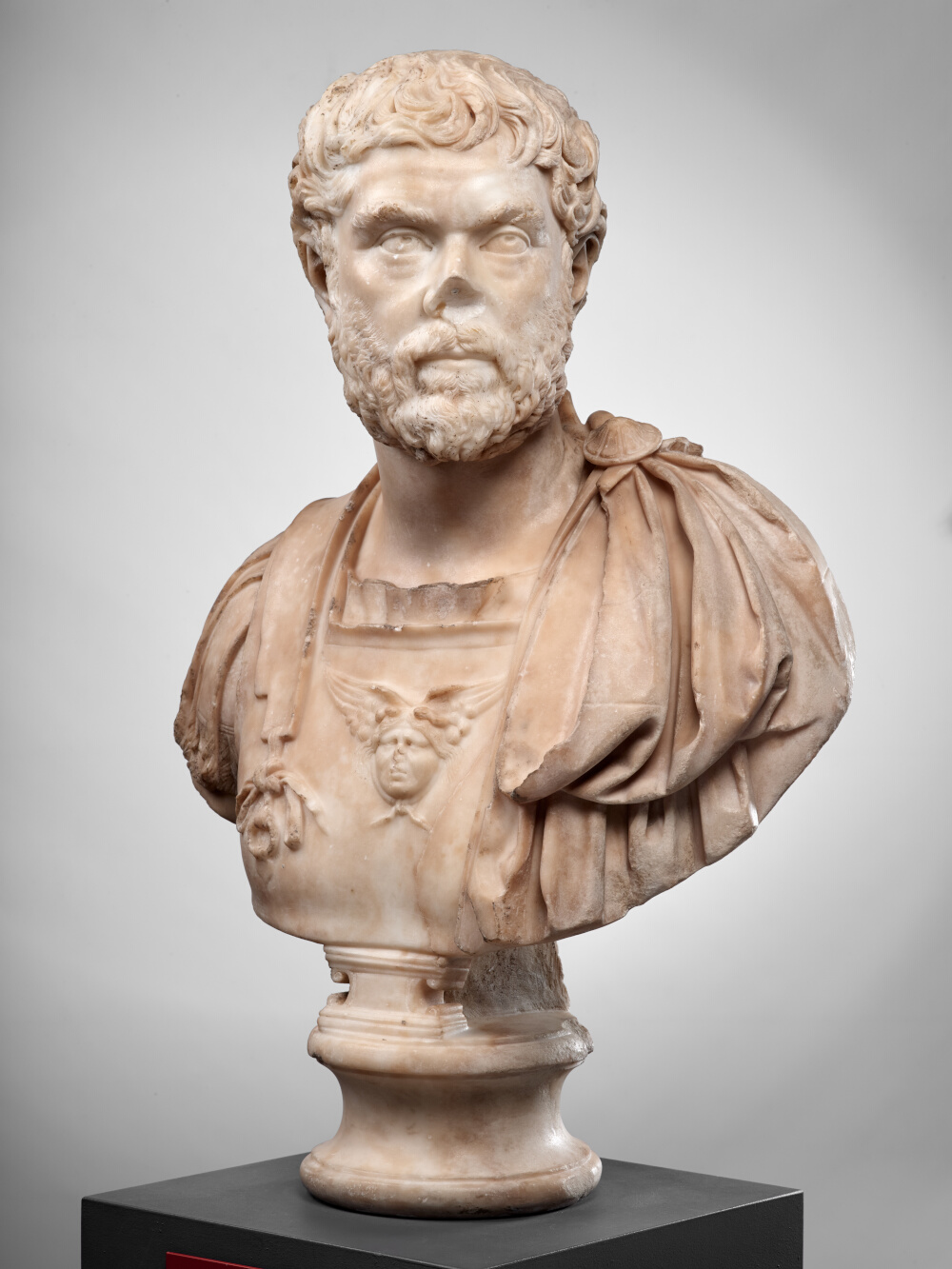
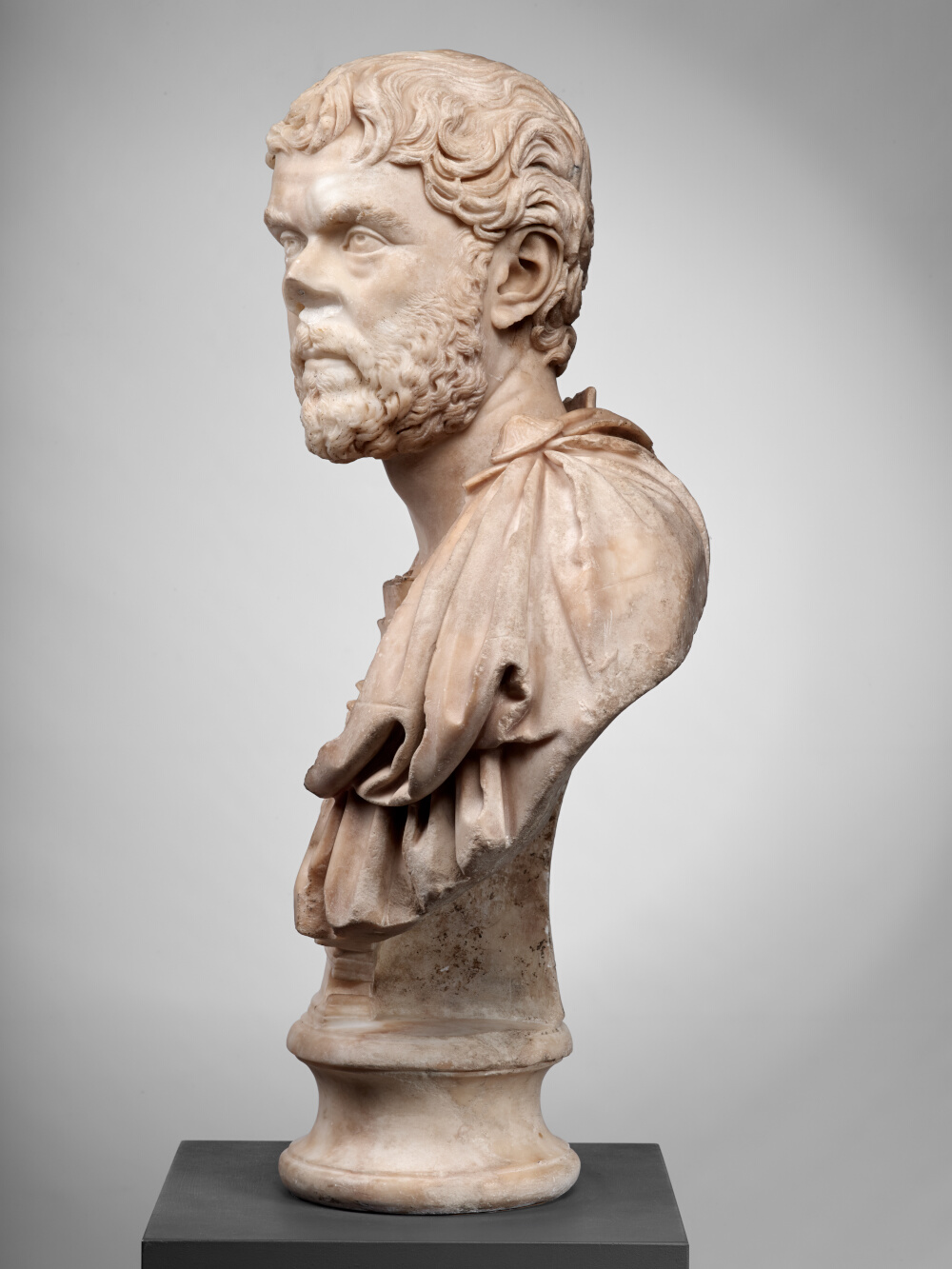
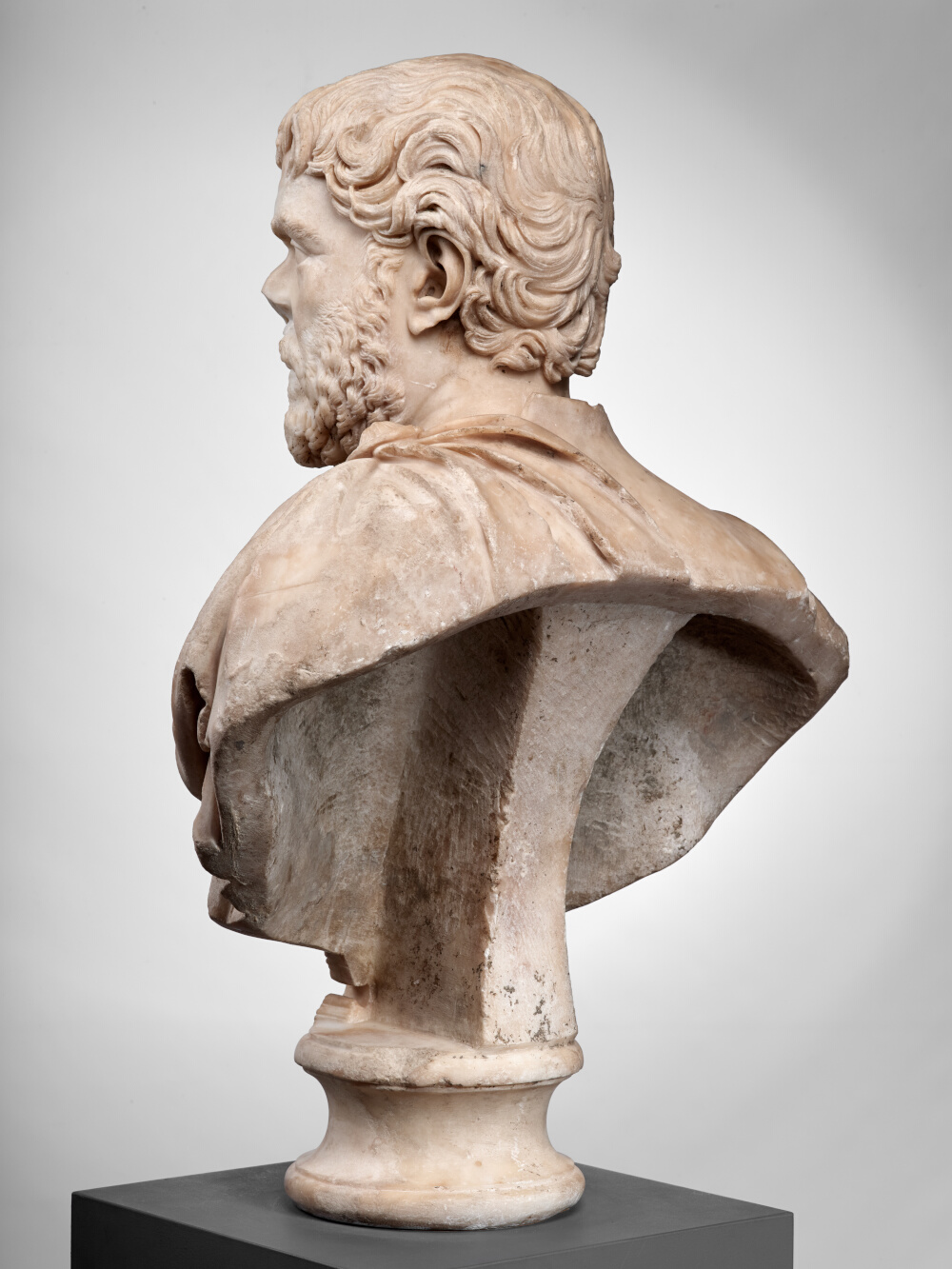
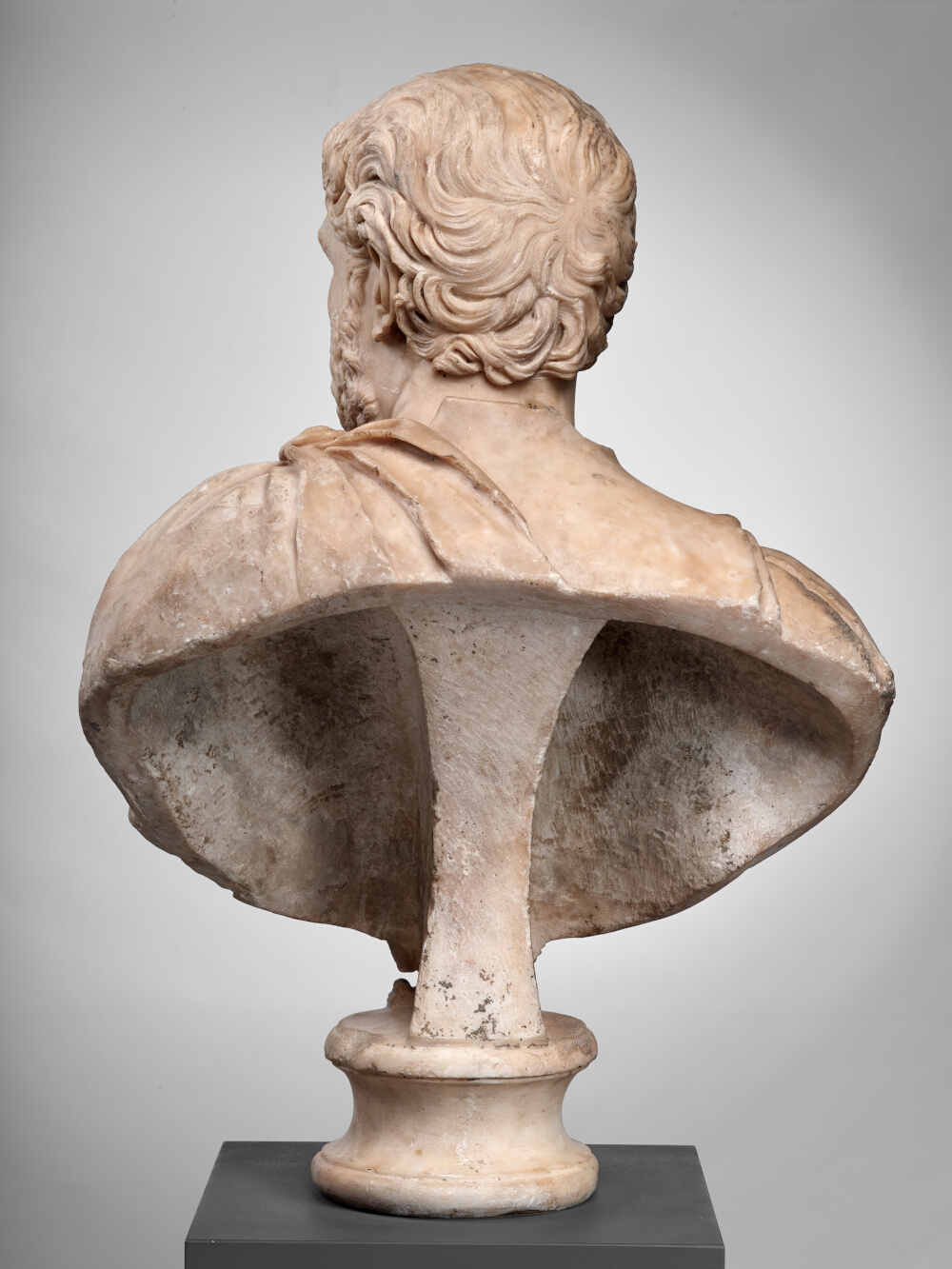
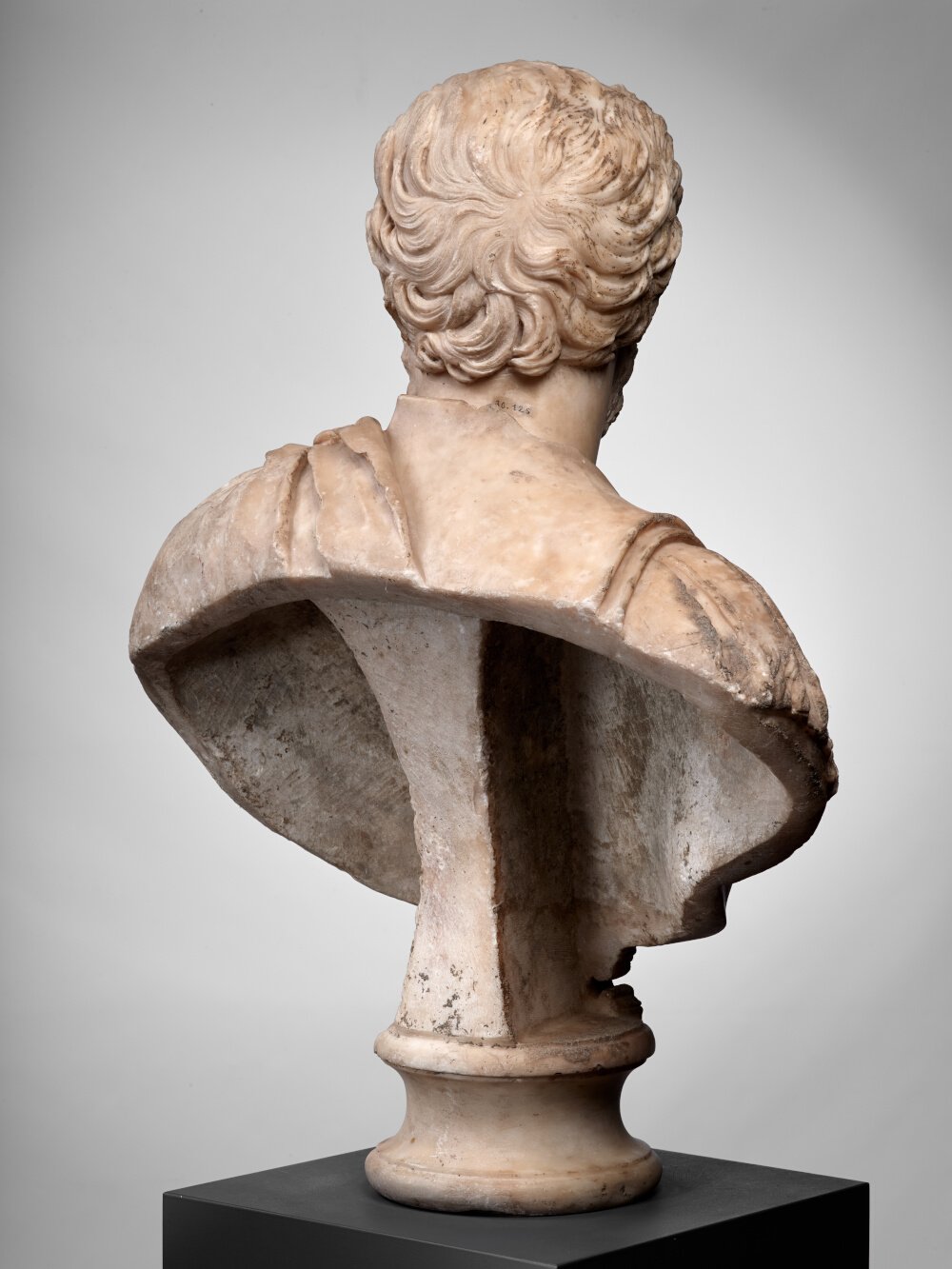
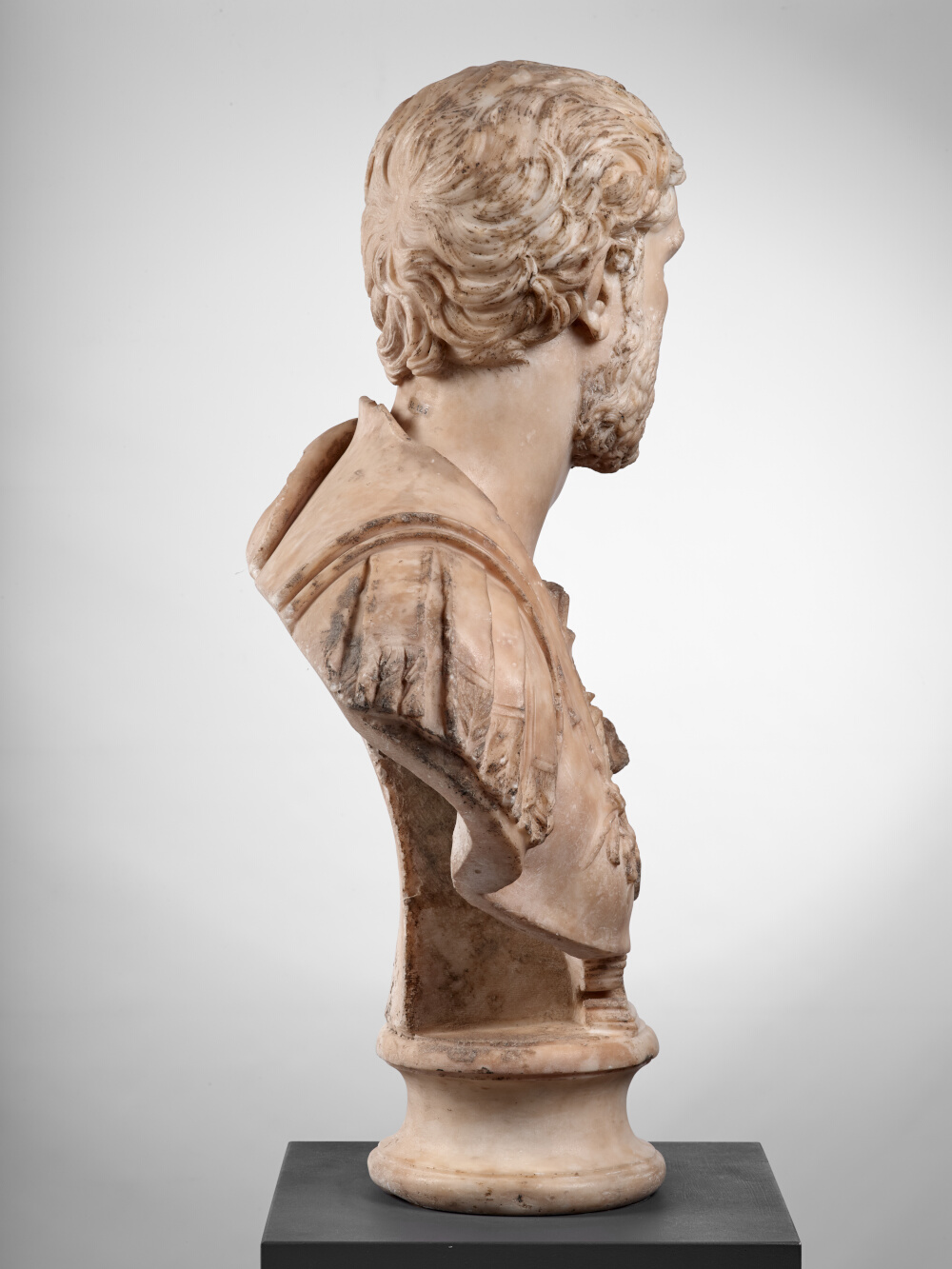
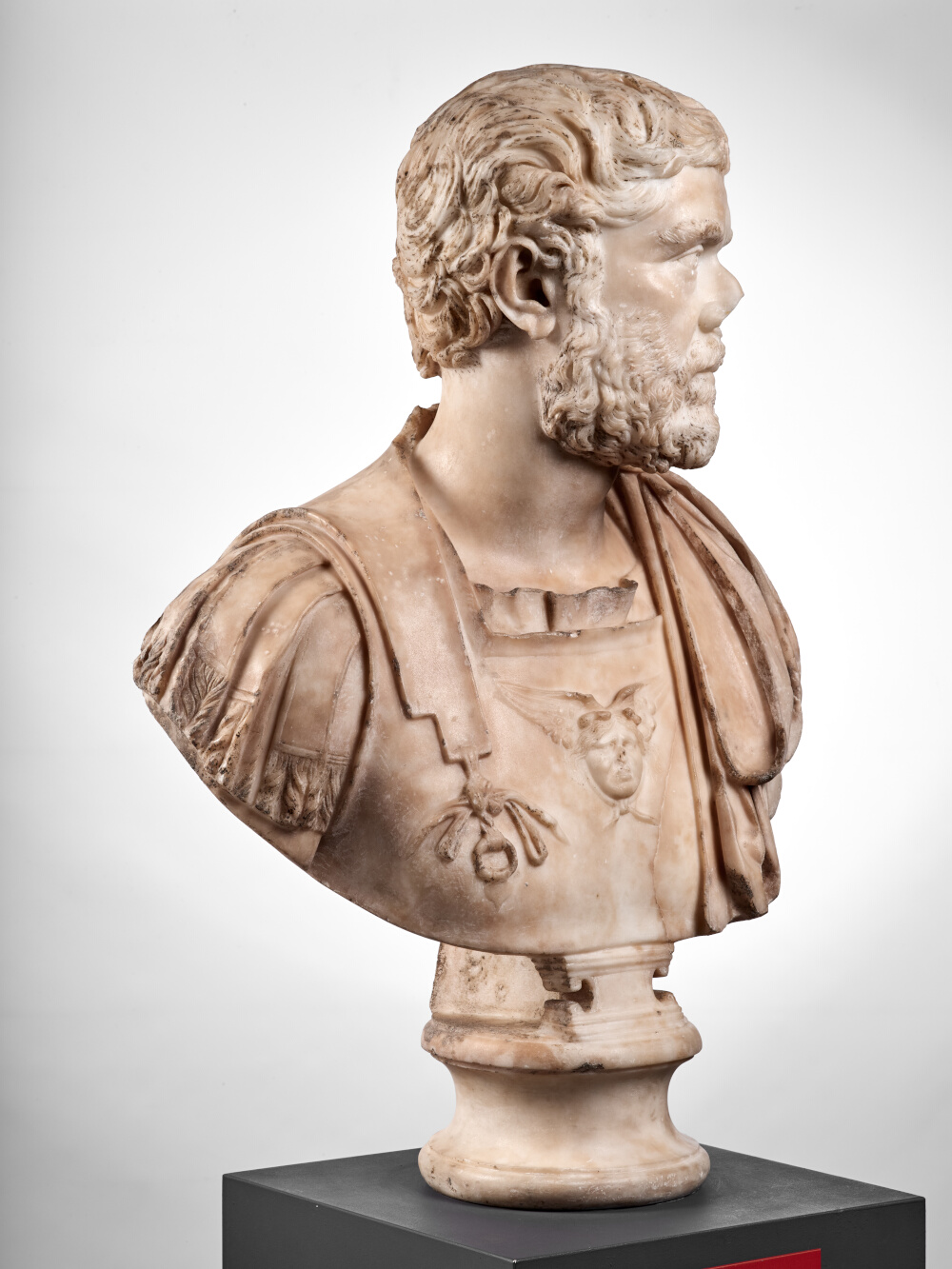
- Date de création
- Approximately AD 130
- Material
- Göktepe marble, district 3 (Turkey)
- Dimensions
- H. 78 x l. 54,5 x P. 29 (cm)
- Inventory number
- Ra 73 e
- Photo credits
- Daniel Martin
Up until the reign of Hadrian, only emperors were depicted wearing a cuirass, which is why examples are relatively rare. This portrait is very similar to several busts of the emperor, especially with regard to certain details, such as the Gorgon head (Gorgoneion), with wings strangely raised, on the breastplate of the cuirass.
The very expressive gaze, under prominent, frowning eyebrows, the hawk nose and the disdainful mouth are a reminder that the realistic current in Roman portraiture was still thriving. This realistic vein is undoubtedly particularly characteristic of the portraits of soldiers and, to a lesser extent, of philosophers and rhetoricians, dependent on an iconography that emerged in Greece towards the end of the classical period, and even certain « middle class » people, and freed slaves in particular.
As members of the equestrian order, these armoured strangers are not (or are no longer) soldiers. They should probably be seen as men who ran for and obtained the office of procurator. In the provinces, these senior officials assumed administrative and fiscal responsibilities. Authorised since the reign of Augustus to wear military garb, they even displayed their equestrian status in their marble representations.
According to J.-C. Balty 2012, Les portraits romains, 1 : Le siècle des Antonins, 1.2 (Sculptures antiques de Chiragan (Martres-Tolosane), Toulouse, p. 163-170.
Bibliography
- Balty, Cazes, Rosso 2012 J.-C. Balty, D. Cazes, E. Rosso, Les portraits romains, 1 : Le siècle des Antonins, 1.2 (Sculptures antiques de Chiragan (Martres-Tolosane), Toulouse. p. 43-44, fig. 42-43, p.165-168, 170, fig. 90-91, 93, 95, 97-100, p. 268, fig. 202
- Cazes et al. 1999 D. Cazes, E. Ugaglia, V. Geneviève, L. Mouysset, J.-C. Arramond, Q. Cazes, Le Musée Saint-Raymond : musée des Antiques de Toulouse, Toulouse-Paris. p. 136
- Du Mège 1835 A. Du Mège, Description du musée des Antiques de Toulouse, Toulouse. p. 119, no 211
- Du Mège 1844 A. Du Mège, Description du musée des Antiques de Toulouse (document manuscrit ). no 373
- Du Mège 1828 A. Du Mège, Notice des monumens antiques et des objets de sculpture moderne conservés dans le musée de Toulouse, Toulouse. p. 68, no 131
- Espérandieu 1908 É. Espérandieu, Recueil général des bas-reliefs de la Gaule romaine, 2. Aquitaine, Paris. p. 76-77, no 978
- Joulin 1901 L. Joulin, Les établissements gallo-romains de la plaine de Martres-Tolosane, Paris. pl. XXIII, no 302 b
- Rachou 1912 H. Rachou, Catalogue des collections de sculpture et d’épigraphie du musée de Toulouse, Toulouse. p. 48-49, no 73 e
- Musée Saint-Raymond 1995 Musée Saint-Raymond, Le regard de Rome : portraits romains des musées de Mérida, Toulouse et Tarragona. Exhibition, Mérida, Museo nacional de arte romano ; Toulouse, Musée Saint-Raymond ; Tarragone, Museu nacional arqueològic de Tarragona, 1995, Toulouse. p. 158
To cite this notice
Capus P., "Bust of a man wearing a cuirass", in The sculptures of the roman villa of Chiragan, Toulouse, 2019, online <https://villachiragan.saintraymond.toulouse.fr/en/ark:/87276/a_ra_73_e>.